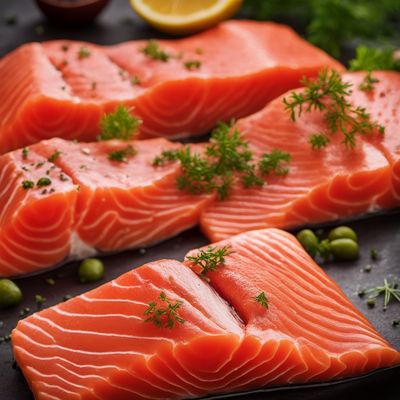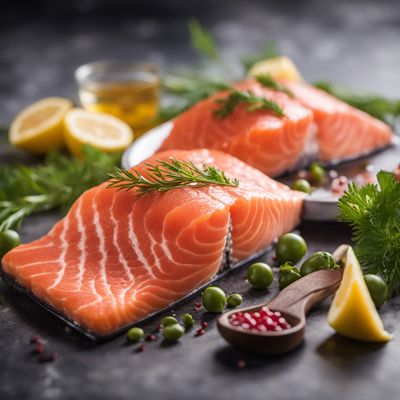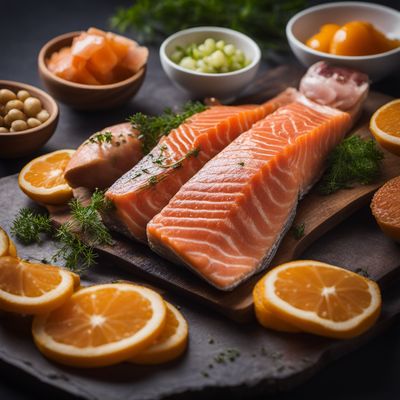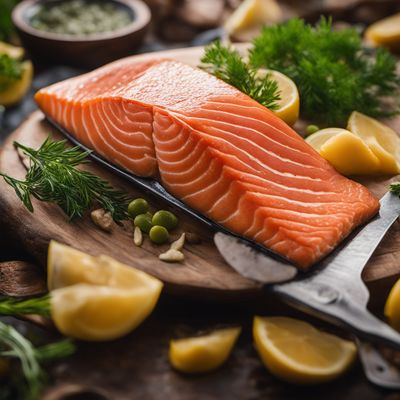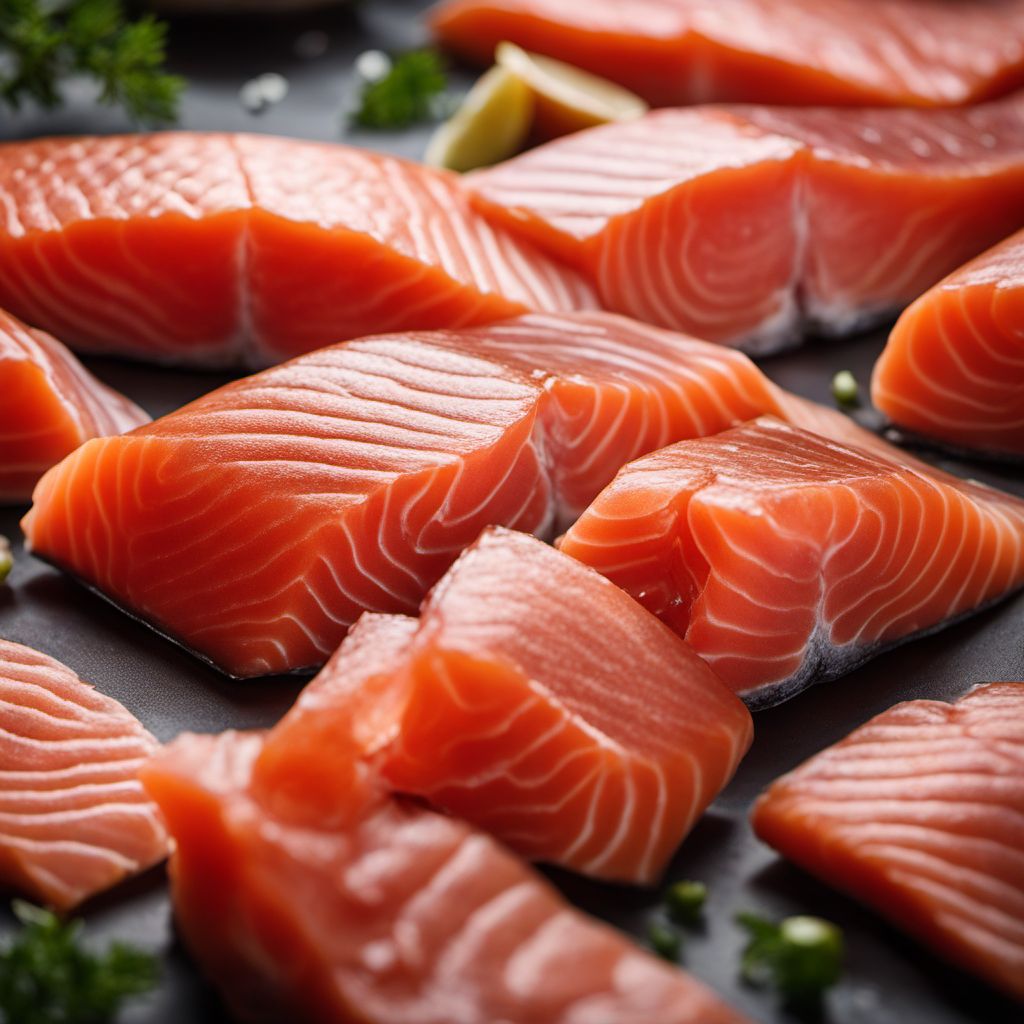
Ingredient
Coho salmon
The Mighty Coho: A Delicate and Nutritious Catch
Coho salmon is a medium-sized fish with a silver-blue color and a firm yet tender flesh. Its flavor is mild and slightly sweet, with a hint of nuttiness. The texture is flaky and moist, making it perfect for grilling, baking, or pan-searing. Coho salmon is known for its vibrant orange-red flesh, which adds a pop of color to any dish.
Origins and history
Coho salmon is native to the Pacific Ocean, particularly the coastal waters of North America and Asia. It has been an important food source for indigenous communities for centuries. In modern times, it is commercially harvested in countries like the United States, Canada, and Russia. Coho salmon holds cultural significance for many indigenous tribes and is an integral part of their traditional ceremonies and feasts.
Nutritional information
Coho salmon is a nutrient-dense fish, rich in omega-3 fatty acids, high-quality protein, and essential vitamins and minerals. It is a good source of vitamin D, vitamin B12, selenium, and potassium. A 3-ounce serving of cooked coho salmon provides approximately 155 calories, 22 grams of protein, and 6 grams of fat.
Allergens
Fish
How to select
When selecting coho salmon, look for firm, shiny flesh with no discoloration or strong fishy odor. The skin should be intact and have a vibrant silver-blue color. If buying fillets, they should be moist and free from any signs of drying or browning. Fresh coho salmon should have clear, bright eyes and red gills. If purchasing frozen coho salmon, ensure that it is properly sealed and has no signs of freezer burn.
Storage recommendations
To maintain the freshness and quality of coho salmon, store it in the refrigerator at a temperature between 32°F and 38°F (0°C and 3°C). Keep the fish wrapped in moisture-proof paper or plastic wrap to prevent it from drying out. If storing for longer periods, consider freezing the salmon in airtight containers or freezer bags.
How to produce
Coho salmon is primarily caught in the wild, but it can also be farmed. If you have access to a clean water source, you can consider raising coho salmon in a well-maintained aquaculture system. However, it requires specific knowledge and expertise to ensure the fish's health and well-being.
Preparation tips
Coho salmon can be prepared in various ways, including grilling, baking, broiling, or pan-searing. For grilling, marinate the salmon in a flavorful sauce or simply season it with salt, pepper, and herbs. Cook over medium-high heat for about 4-6 minutes per side, depending on the thickness of the fillets. When baking, preheat the oven to 400°F (200°C) and place the seasoned salmon on a baking sheet lined with parchment paper. Bake for approximately 12-15 minutes or until the fish flakes easily with a fork. Coho salmon pairs well with citrus flavors, dill, garlic, and soy-based sauces.
Substitutions
Rainbow trout, Arctic char, Atlantic salmon
Culinary uses
Coho salmon is commonly used in a variety of dishes, including salads, pasta, sushi, and grilled or baked main courses. It can be served as a whole fillet, in steaks, or flaked into salads or pasta dishes. Coho salmon is also a popular choice for smoking, as it absorbs flavors well and develops a rich, smoky taste.
Availability
Coho salmon is commonly available in North America, particularly in the United States and Canada. It is also found in some parts of Asia, including Russia and Japan.

